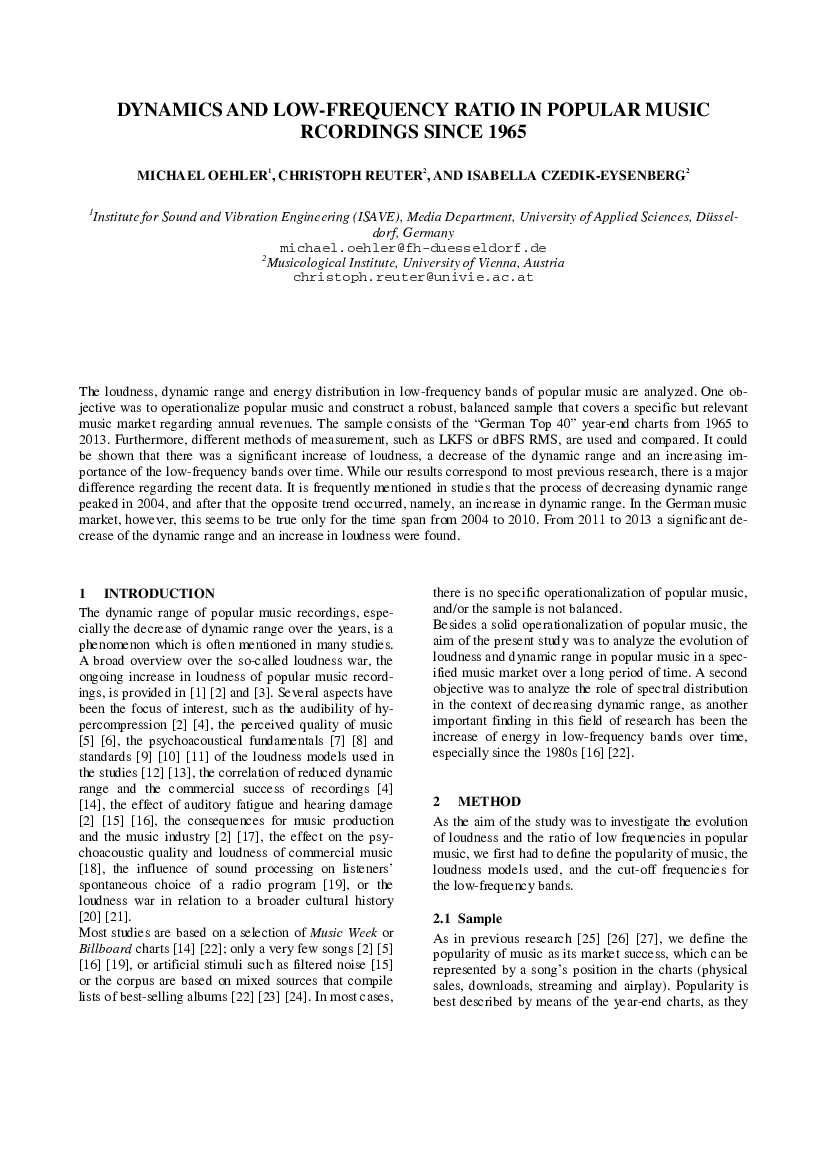Home / Publications / E-library page
You are currently logged in as an
Institutional Subscriber.
If you would like to logout,
please click on the button below.
Home / Publications / E-library page
Only AES members and Institutional Journal Subscribers can download
The loudness, dynamic range and energy distribution in low-frequency bands of popular music are analyzed. One objective was to operationalize popular music and construct a robust, balanced sample that covers a specific but relevant music market regarding annual revenues. The sample consists of the “German Top 40” year-end charts from 1965 to 2013. Furthermore, different methods of measurement, such as LKFS or dBFS RMS, are used and compared. It could be shown that there was a significant increase of loudness, a decrease of the dynamic range and an increasing importance of the low-frequency bands over time. While our results correspond to most previous research, there is a major difference regarding the recent data. It is frequently mentioned in studies that the process of decreasing dynamic range peaked in 2004, and after that the opposite trend occurred, namely, an increase in dynamic range. In the German music market, however, this seems to be true only for the time span from 2004 to 2010. From 2011 to 2013 a significant decrease of the dynamic range and an increase in loudness were found.
Author (s): Oehler, Michael; Reuter, Christoph; Czedik-Eysenberg, Isabella
Affiliation:
University of Applied Sciences Düsseldorf, Düsseldorf, Germany; University of Vienna, Vienna, Austria
(See document for exact affiliation information.)
Publication Date:
2015-03-06
Import into BibTeX
Session subject:
Audio loudness in a consumer and professional environment
Permalink: https://aes2.org/publications/elibrary-page/?id=17612
(1627KB)
Click to purchase paper as a non-member or login as an AES member. If your company or school subscribes to the E-Library then switch to the institutional version. If you are not an AES member Join the AES. If you need to check your member status, login to the Member Portal.

Oehler, Michael; Reuter, Christoph; Czedik-Eysenberg, Isabella; 2015; Dynamics and Low-Frequency Ratio in Popular Music Recordings since 1965 [PDF]; University of Applied Sciences Düsseldorf, Düsseldorf, Germany; University of Vienna, Vienna, Austria; Paper 3-1; Available from: https://aes2.org/publications/elibrary-page/?id=17612
Oehler, Michael; Reuter, Christoph; Czedik-Eysenberg, Isabella; Dynamics and Low-Frequency Ratio in Popular Music Recordings since 1965 [PDF]; University of Applied Sciences Düsseldorf, Düsseldorf, Germany; University of Vienna, Vienna, Austria; Paper 3-1; 2015 Available: https://aes2.org/publications/elibrary-page/?id=17612